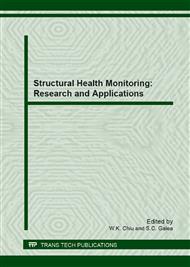p.386
p.400
p.411
p.424
p.435
p.445
p.456
p.465
p.477
Novel Transducer for Characterization of Low-Impedance Materials
Abstract:
Piezoelectric materials such as lead-zirconate-titanate (PZT), lead-metaniobate, and piezo-composites are the materials of choice for acoustic imaging in medical diagnosis as well as underwater ultrasonic microphones and underwater sonar. PZT materials have the advantage of having high electro-mechanical coupling, low internal losses and excellent environmental durability. Nonetheless, in order to improve energy transmission the high acoustic impedance of piezoelectric ceramics needs to be matched to the lower acoustic impedance of biological tissues and water. For actuators resonated in their thickness mode, energy transmission can be improved by means of intermediate layers of material of carefully selected thicknesses and acoustic properties. Sometimes a backing layer is also added to the back of the actuator to damp the acoustic back-wave. The process of making these types of transducers is generally costly due to the nature of the manufacturing process and the required level of accuracy. This paper describes an inexpensive method of manufacture low-cost, low-impedance, piezoelectric transducers. The fundamental physical principles behind this new type of sensor-actuator, as well as various examples of imaging low-impedance targets using a prototype of this newly developed sensor-actuator system will be presented.
Info:
Periodical:
Pages:
435-444
Citation:
Online since:
June 2013
Authors:
Keywords:
Price:
Сopyright:
© 2013 Trans Tech Publications Ltd. All Rights Reserved
Share:
Citation:


